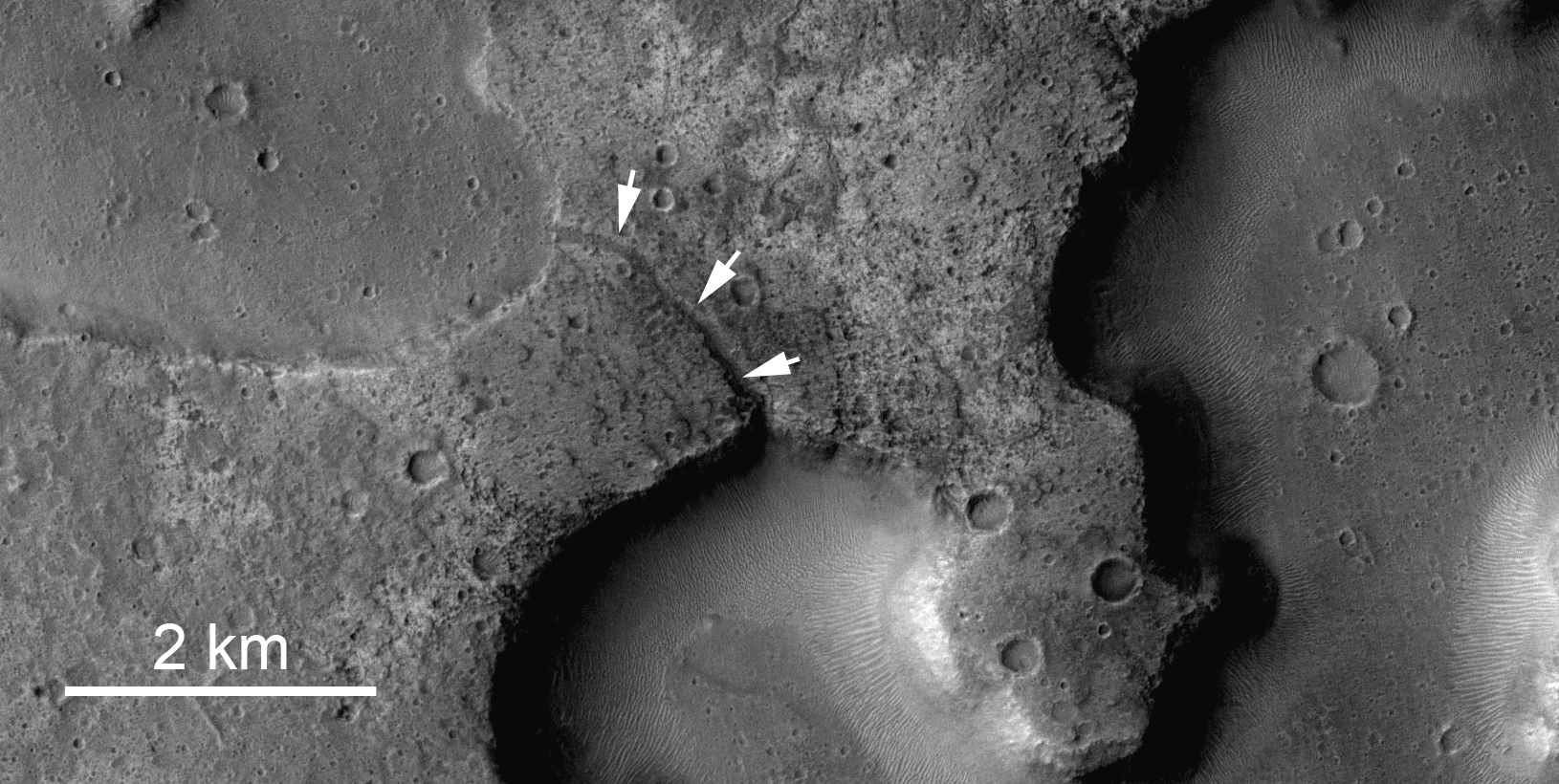Image of a channel between putative lakes from the Context Camera (CTX) onboard NASA’s Mars Reconnaissance Orbiter (MRO).
Modern Mars is frigid and dry, but new evidence suggests that in some locations on the equator there may have been lakes as recently as 3 billion years ago.
Researchers from Imperial College London and University College London studied images from the context camera (CTX) on NASA’s Mars Reconnaissance Orbiter (MRO) of several flat-floored depressions in Ares Vallis, near the martian equator.
Previously these depressions were thought to be due to the collapse of the surface as ground ice sublimated directly to gas, but CTX images reveal small channels connecting the depressions, suggesting that water flowed between them. Similar features can be found in “thermokarst” landscapes in Alaska and elsewhere, where permafrost is melting to create lakes and streams.
To determine the age of the features, the scientists counted more than 35,000 craters in the area. Assuming that the current surface was continuously exposed to impacts from space since it was emplaced, the density of craters points to an age of roughly three billion years.
Previously, it was thought that Mars dried up between 4 and 3.8 billion years ago, but if the cratering age from this study is correct, these new results suggest at least brief periods later in martian history when lakes could exist.
The lead author, Dr Nicholas Warner, from the Department of Earth Science and Engineering at Imperial College London, said: “Most of the research on Mars has focused on its early history and the recent past. Scientists had largely overlooked the Hesperian Epoch as it was thought that Mars was then a frozen wasteland. Excitingly, our study now shows that this middle period in Mars’ history was much more dynamic than we previously thought.”
It is not clear how long-lived the lakes were, but Warner and colleagues suggest that they may have served as oases for life in an otherwise inhospitable world. They also suggest that these lakes would be an interesting landing site for future robotic missions.
What’s the next step? The researchers plan to study other equatorial areas, including the mouth of Ares Vallis and Chryse Planitia to see how widespread the putative lakes were.

